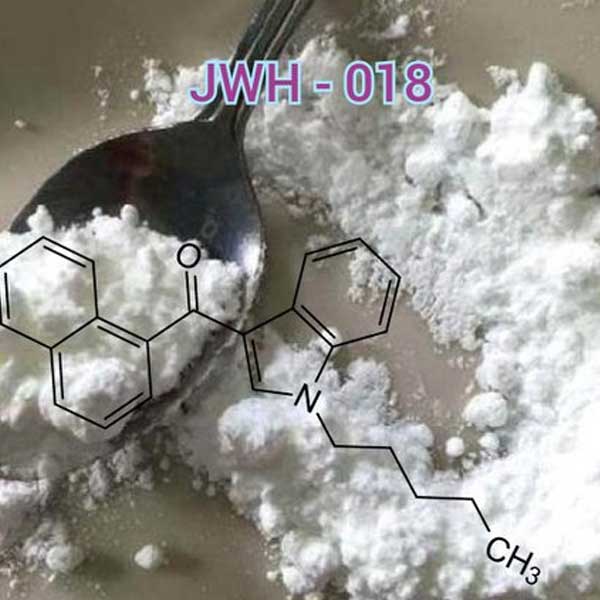
JWH-018 Neuroscience. JWH-018 is a synthetic cannabinoid receptor selective agonist that has been studied for its pharmacological properties and potential therapeutic applications in neuroscience.
JWH-018 is a synthetic cannabinoid receptor selective agonist that has been studied for its pharmacological properties and potential therapeutic applications in neuroscience. … Analysis of the powder used confirmed it was JWH-018 and subsequent analysis of the urine detected the major
Physical and chemical description
The term SC covers all synthetic substances binding to, and agonizing, one of the two known cannabinoid receptors (CB1 or CB2) and their structural/chemical analogues. Colloquially referred to as ‘K2’ or ‘Spice’, SCs include a wide range of compounds with various chemical modifications [20]. Given the variety of compounds, there have been difficulties establishing consistent nomenclature in the identification of SCs [37]. Additionally, many naming systems for SCs are employed ranging from those created for marketing purposes (such as ‘Black Mamba’) to chemical names (typically employed by chemists and forensicists) to colloquial or “street” terms (such as ‘K2’). Simplified approaches of creating serial names (such as identifiers based on those that first discover the compound) or systematic abbreviated names have been proposed, but no single naming system has been agreed upon by experts. Broadly SCs can be chemically classified by their chemical moieties as broken down by their core, tail, linker, and linked group (see Fig. 15.2). The core group most commonly consists of an indole, indazole, or a carbazole. Further chemical modification is performed by linkage – via a methanone, ethenone, caroboxamide, or carboxylate group – to another chemical group such as a naphthyl group. The addition of the linked and tail group has provided significant chemical variety among SCs. A classification and examples of the numerous available SCs is provided in Table 15.2[37–41]. Table 15.2 is by not inclusive of all known SCs with at least 180 known chemical variations as of January 2019 according to the European Monitoring Centre for
The synthetic CB1 cannabinoid receptor selective agonists: Putative medical uses and their legalization
Astrid Coronado-ÁlvarezKaren Romero-CorderoLorena Macías-TrianaAgnes Tatum-KuriAlba Vera-BarrónHenning BuddeSérgio MachadoTetsuya YamamotoClaudio ImperatoriEric Murillo-Rodríguez, in Progress in Neuro-Psychopharmacology and Biological Psychiatry, 2021
Abstract
More than 500 molecules have been identified as components of Cannabis sativa (C. sativa), of which the most studied is Δ9-tetrahydrocannabinol (Δ9-THC). Several studies have suggested that Δ9-THC exerts diverse biological effects, ranging from fragmentation of DNA to behavioral disruptions. Currently, it is accepted that most of the pharmacological properties of Δ9-THC engage the activation of the cannabinoid receptors, named CB1 and CB2. Interestingly, multiple pieces of evidence have suggested that the cannabinoid receptors play an active role in the modulation of several diseases leading to the design of synthetic cannabinoid-like compounds. Advances in the development of synthetic CB1 cannabinoid receptor selective agonists as therapeutical approaches are, however, limited. This review focuses on available evidence searched in PubMed regarding the synthetic CB1 cannabinoid receptor selective agonists such as AM-1235, arachidonyl-2′ chloroethylamide (ACEA), CP 50,556–1 (Levonantradol), CP-55,940, HU-210, JWH-007, JWH-018, JWH-200 (WIN 55,225), methanandamide, nabilone, O-1812, UR-144, WIN 55,212-2, nabiximols, and dronabinol. Indeed, it would be ambitious to describe all available evidence related to the synthetic CB1 cannabinoid receptor selective agonists. However, and despite the positive evidence on the positive results of using these compounds in experimental models of health disturbances and preclinical trials, we discuss evidence in regards some concerns due to side effects.